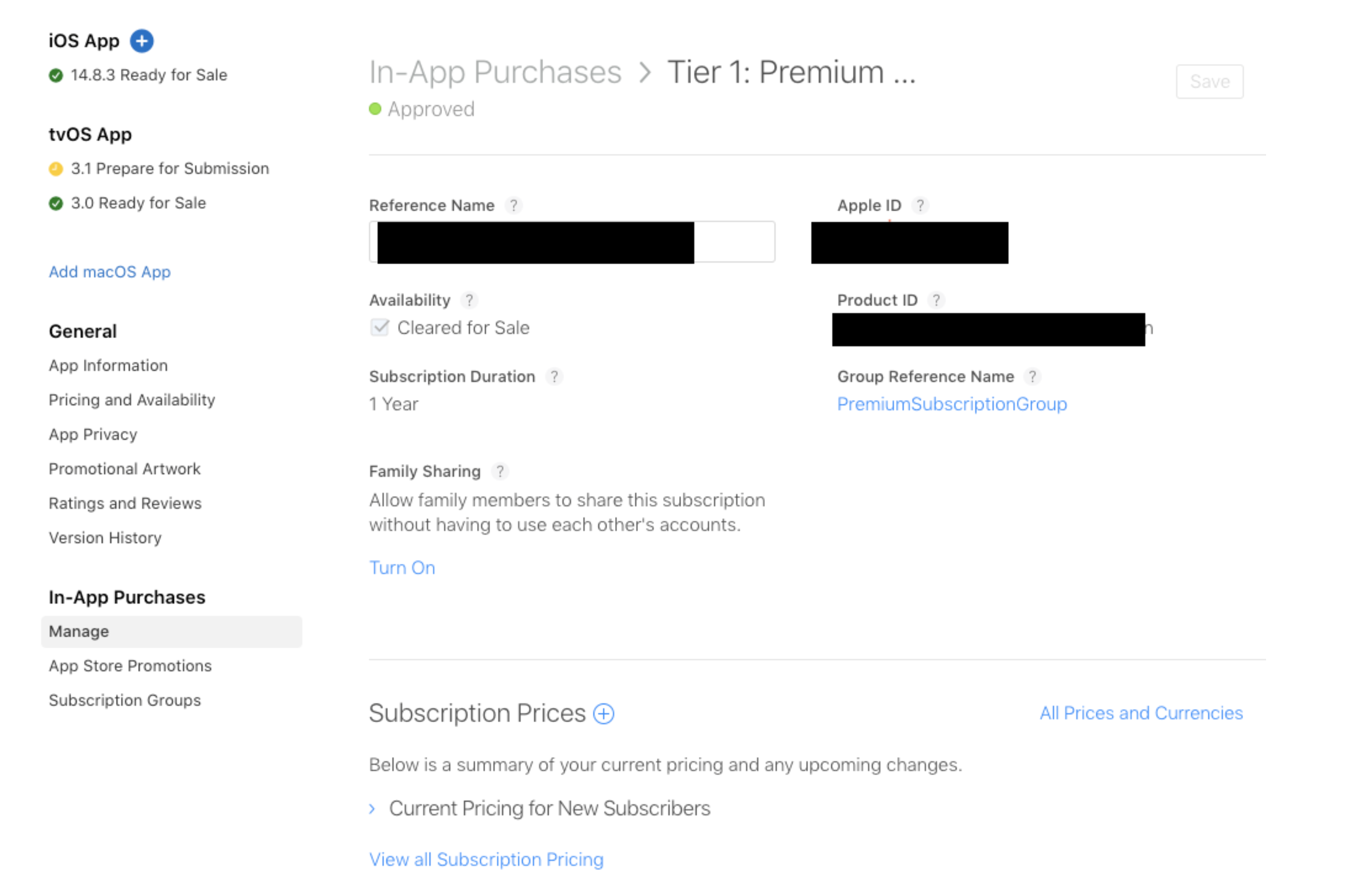AccuWeather meteorologists are available 24/7 to provide further insights and updates on evolving weather conditions. Please contact pr@accuweather.com during regular business hours, or support@accuweather.com or call AccuWeather’s Media Hotline at (814)-235-8710 at any time to arrange interviews with AccuWeather experts or to request the most updated graphics for print or broadcast.
Sizzling Summer Temperatures Could Lead To Higher Power Bills Across America
|
|||||||||||
May 1, 2024
> More 90-degree days are expected in New York City, Boston, Philadelphia, Washington D.C. and Chicago this summer compared to 2023.
> Drought conditions forecast to expand in Northern Rockies, Interior Northeast, and Interior Southwest
> Forecast for “Explosive” hurricane season could lead to increased flooding threats along the Gulf Coast
> California is expected to remain free of widespread drought this summer
AccuWeather Global Weather Center – May 1, 2024
AccuWeather’s team of long-range forecasters says millions of Americans are expected to experience above-historical average temperatures across much of the country this summer.
The AccuWeather U.S. 2024 Summer Forecast also calls for rounds of stormy weather in the Central U.S. and Gulf Coast, as well as growing drought concerns from the upper Midwest and Great Lakes to the interior Northeast.
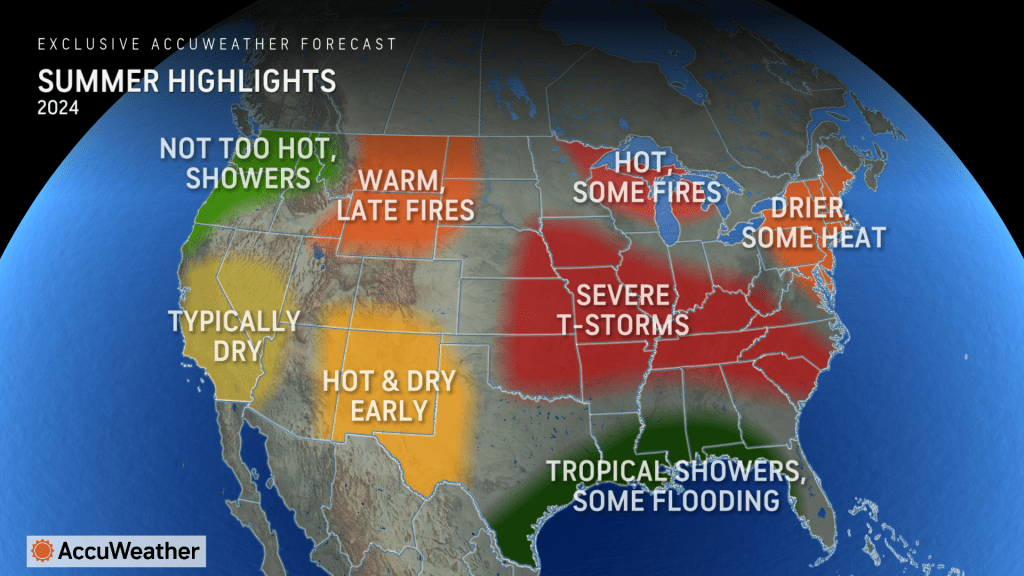
The summer heat will come on the heels of a warm spring in many places. Baltimore topped 90 degrees on April 29, nearly one month ahead of the historical average. Phoenix had its earliest 100-degree day in six years, on April 21.
Increased Demand For Air Conditioning & Higher Power Bills
Temperatures are expected to climb at least two degrees above the historical average across more than half of the United States this summer.
AccuWeather Lead Long-Range Forecaster Paul Pastelok says the widespread heat could lead to higher energy bills for families and businesses running air conditioners around the clock.
“Energy demand is expected to be higher compared to average. Air conditioners, fans, and other cooling devices will be in high demand,” said Pastelok. “Summer 2024 can feature heat waves for many areas across the Plains to the Northeast. Compared to historical averages, the hottest areas could be over the Great Lakes, upper Midwest, and southwest Plains.”
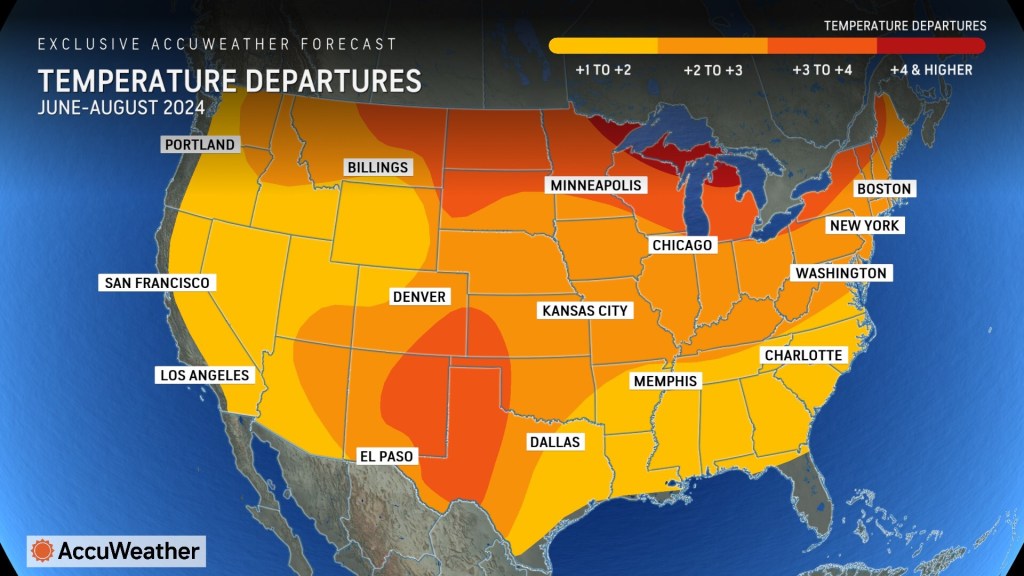
Rounds of showers and thunderstorms in these areas could offer breaks in the heat in June and July, but drier weather could result in hotter temperatures for the region in August.
New York City is forecast to see double the number of 90-degree days compared to last summer. People in Boston could experience four times as many 90-degree days this summer, compared to the five days reported last summer.
Philadelphia, Chicago, and Washington D.C. are also forecast to experience more 90-degree days this summer, compared to last year and the historical average.

At times, showers and thunderstorms will help to curb excessive heat along Gulf Coast states, a dramatic shift from the pattern last summer. Dry spells led to hotter temperatures and expanded drought conditions last summer, especially in Louisiana and coastal Texas.
Daytime high temperatures are forecast to be near historical averages, but high humidity levels will lead to very warm nights across much of the Gulf Coast region.
Storms at times in the Pacific Northwest will bring showers and thunderstorms to the area this summer. The pattern will reduce the chance of prolonged stretches of hot temperatures in Portland and Seattle.
Denver is forecast to see more 90-degree days this summer, compared to last year. Minneapolis, Dallas, Phoenix, and Portland, Oregon, are all expected to see fewer 90-degree days this summer, compared to 2023.
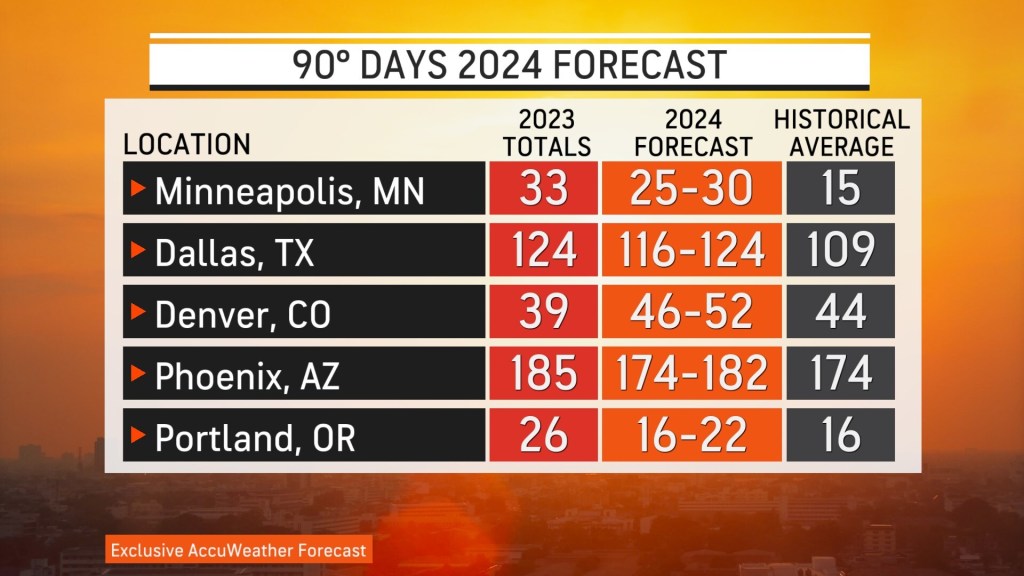
Summer Thunderstorms Rumbling Across America
The increase in summer heat across much of the country will contribute to an expected uptick in storms.
“Severe weather events can be frequent in June and part of July,” said Pastelok.
Intense summer heat can also enhance the risk of a derecho, or a cluster of intense thunderstorms that cause widespread wind damage over a long path.
A derecho generates winds over 58 miles per hour across an area more than 400 miles wide.
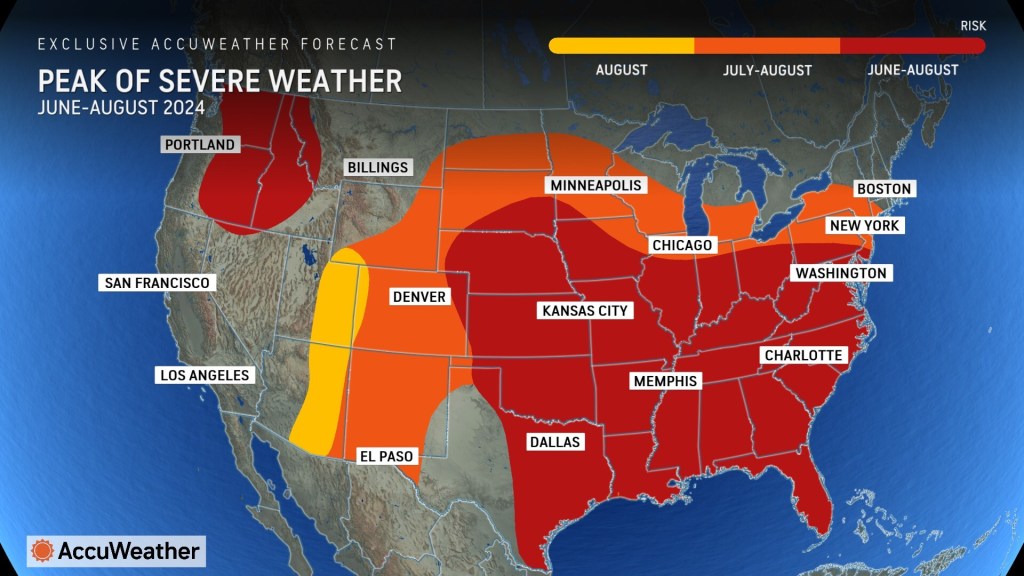
The annual monsoon is the driving force behind most of the summertime storms in the southwest United States, but Pastelok says the monsoon may arrive later this year as compared to recent years.
Monsoon activity in the Southwest is forecast to peak from late July through mid-August, before winding down in September.
Storms in the Southwest can provide relief from the heat, but they can also raise the risk of flash floodings and wildfires sparked by lightning.
Pastelok said flooding could also be a problem from the Florida coast to the Texas coast this summer.
“There is an increased flood threat for the Gulf Coast states as a busy tropical season is anticipated with one or two threats in the summer season,” said Pastelok.
AccuWeather expert meteorologists are forecasting an “explosive” hurricane season with 20 to 25 named storms across the Atlantic Basin and four to six direct impacts on the United States.
Tropical activity could ramp up around the same time the wildfire season shifts into high gear across the U.S. and Canada.
Following a warm winter with below-historical average snowfall across much of the northern Plains and upper Midwest, drought conditions are expected to expand and increase the threat of wildfires.
Pastelok says dry conditions will contribute to temperatures climbing higher than the historical average in the interior Southwest. Streaks of 100 to 110 degrees are expected.
Drought conditions in the lower Midwest states are expected to end by early summer, but Pastelok says drought will intensify and spread from the northern Rockies to the far interior Northeast.
AccuWeather expert meteorologists announced in March that California would remain free of widespread drought through the end of 2025, following back-to-back winters with above-historical average precipitation and mountain snowpack. Pastelok said pockets of abnormally dry conditions are possible in California by late summer.

AccuWeather expert long-range forecasters expect fewer wildfires across the United States this year, but warn that that Canada could see another summer with large wildfires that sends smoke pouring into northern U.S.
Climate Connection
The trend of hotter afternoons and warmer nights during the summer months are becoming more common and having larger impacts across the United States.
“There has been a significant increase in the amount of area in the lower 48 states that has experienced unusually warm summer nights, and to a lesser extent hotter afternoons, especially over the past 25 years,” said AccuWeather Senior Meteorologist Brett Anderson. “The western U.S. has seen the greatest increase in the number of scorching summer days. Drier years in recent times have helped build the summer heat.”
Anderson said families and businesses across much of the nation should prepare for a future with more intense heat waves.
“There have been notable changes in the characteristics of heat waves in the United States since the 1960’s. The biggest change that we’ve seen in recent decades is the heat wave season expanding, starting earlier in the late spring, and stretching into early fall,” explained Anderson. “Heat waves are happening more often, and they are lasting longer. Climate change is a main contributor behind the intense heat waves in the U.S.”
Prepare For Future Heat Waves
With a hot summer on the horizon and the growing likelihood of even hotter summer temperatures in the future, AccuWeather expert meteorologists say families and businesses need to plan ahead and budget for higher energy bills.
Experts at AccuWeather’s Global Center created the AccuWeather HeatWave Counter and Severity Index last summer to help people better understand and quantify heat waves by duration and intensity.
Officials at the Federal Emergency Management Agency say extreme heat is the leading weather-related cause of death in the United States. FEMA leaders say heat waves can also threaten critical infrastructure due to growing demand on the electrical grid to run air conditioners at massive data centers. Extreme heat can also lead to roadways, railways, and airport runways buckling.
Additional AccuWeather Resources:




